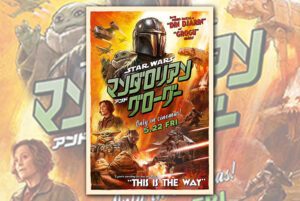On the court, NBA 2K20 is a dazzling experience that matches the energy and presentation of its real-life counterpart. Enhanced footwork, dribbling, and player spacing help improve an already sturdy foundation. However, outside of the surprisingly well-written story mode, NBA 2K20 loses its focus off of the court. NBA 2K20 excels at recreating the pro game, but opportunities to purchase microtransactions exist at nearly every corner, and complex modes like MyLeague are given far too little attention.
The first thing I noticed about NBA 2K20 is that everything feels more intuitive. The learning curve is still immense, but learning the basics is now a lot smoother than it used to be. A redesigned “2KU”, NBA 2K20’s optional tutorial mode, is particularly helpful and doesn’t require more than an hour to get through. Thoughtfully, an on-screen controller mimics the movement of the desired skill, making it plenty easy to imitate. Once I successfully learned a skill, like eurostepping toward the basket, I could move on at whatever pace I felt comfortable. This allowed for the remastering of skills I forgot about since last year, and trying out some moves I hadn’t been able to pull off previously at all.
NBA 2K20 upholds the recent franchise tradition of having top-notch presentation. Players are expertly crafted to mirror their real-life selves and a bevvy of apparel options have been added to help match the NBA’s sense of style. Both players and announcers will flash a lifeless gaze every now and again, but it wouldn’t be so noticeable if everything from the player’s shoes to the court floors weren’t so meticulously crafted. I also noticed some awkward pauses between David Aldridge and players during interviews, which is a stark contrast to the effortless flow of commentary from the likes of Kevin Harlan, Greg Anthony, Chris Webber, Doris Burke and more. NBA 2K20’s stellar A/V package is rapidly approaching what can be seen on television, and that really is a remarkable accomplishment.
While the NBA 2K franchise has always done an excellent job making each player feel unique, having a renewed sense of mastery over the controls brings out the best in each player. Pulling off step-back jumpers with James Harden or blow-bys with Eric Bledsoe is really satisfying, and with improved defensive A.I., more important than it has been in the past. Defenders are better equipped to deal with speedy players, especially in transition, where tactics like “walling up” (a defense strategy used to forced contested shots near the rim) are employed against drive-heavy players like LeBron James. Learning when to pull up for a jumper and when to drive it right to the basket provides a welcomed new layer of frantic strategy.
“
A lot of this is amplified by the badge system, which attaches unique abilities to players that are less tangible than something like the speed or strength attribute. Take the “Pogo Stick” badge, for instance. This allows for players like Anthony Davis to quickly regroup after a blocked shot, making it easier to block several shots in a row. Another interesting badge is “Worm”, which is attached to players who are better at slipping through box-outs when rebounding. The total badge count is about 80, and it really can’t be overstated how much they can be felt while playing. NBA 2K20 goes above and beyond to make every player feel and play unique.
The best gameplay addition to NBA 2K20, however, is the upgraded ball-handling system. Instead of canned animations taking over mid-dribble, every success and failure I had with the ball in my hands felt earned. Even flipping the basketball from one hand to another feels satisfying, especially when you follow it up with a ankle-breaking crossover from someone like Kyrie Irving. Given how much time is spent looking at players with the ball, the newly added dribbling animations help things look different, too. Watching Giannis barrel down the court with long strides is just as majestic as you would expect. The pursuit of mastery is NBA 2K20’s best hook, and the ball-handling mechanics are the best example of that.

Still, a lot of the franchise’s legacy issues persist and a few new ones crop up. The CPU rarely plays with the urgency it should, ignoring easy 2-for-1 scenarios and milking the clock even when they are losing in the final moments of a game. Infrequently, the CPU will also dribble out of bounds for seemingly no reason at all. Perhaps worst of all is a far-too-frequent double team that happens on any player who scores a handful of points in succession. The idea is right – adjustments need to be made on players who are hot – but it’s often far too premature and easy to break down.
A lot of the gameplay improvements are magnified in the new WNBA mode. Spacing feels particularly good, which is key in simulating the differences between the men’s and women’s game. It ultimately leads to better off-ball movement and smoother play in general. The animations are almost unique to the league, helping differentiate itself from NBA play. It could be the novelty of getting to play with a whole new set of stars, like Candace Parker or Liz Cambage, but it feels entirely fresh.
“
The WNBA mode is not without its problems, however, including a noticeably worse commentary team of Blake Suniga, Tim Swartz, and Brian Banifatemi. While it’s nice that the trio is entirely separate from the NBA’s broadcast crew, it seems like this would have been a perfect spot to bring in Doris Burke (who is already in it) or someone like Pam Ward. As a whole, the crew isn’t bad, it’s just hard to switch from the rock-solid presentation package that the NBA has. On top of that, the WNBA is unavailable for online play. This is a shame, because the league would be perfect for some competitive matches against other players. Luckily, NBA 2K20 comes with a WNBA season mode for some extended depth, even if it doesn’t reach the heights of the much deeper MyLeague installed for NBA play.
Beyond the Court
Speaking of MyLeague, it’s received disgracefully few enhancements in 2K20. It’s also one of the few modes left untouched by microtransactions. MyLeague is so close to being feature complete that it would be easier to ignore the lack of improvement if some of the major problems, like the inability to sign-and-trade players, were seen to. Some quality of life changes were made, like the option to force wins and losses (in the case that you want a particular result while simulating), but it’s clear that MyLeague wasn’t given the attention it deserves. Unfortunately, it’s mostly ignored in favor of the casino-like MyTeam, which provides a host of complicated problems for NBA 2K20.

The best thing about MyTeam is also the worst thing about MyTeam: it provides an endless set of things to do. It became immediately clear to me that the mode’s centralized goal is to extract as much money as I am willing to give up in place of not having to grind out various mundane challenges. Not only did I find myself disinterested in grinding tasks with a roster of bottom-of-the-barrel players, unlocking a “premiere” pack costs anywhere in between $5-10, and even then there is no guarantee of who or what I would be receiving. To make matters worse, the entire mode and its UI is designed like a casino, all the way up to a lifeless roulette wheel that randomly stops upon a prize. The only redeeming quality to the entire mode is a card-pack ripping sound effect – which only served to remind me of how preferable real-life card collecting is to the joylessness of MyTeam.
The available game modes aren’t universally a disappointment, however. The MyCareer story mode “When The Lights Are Brightest” is the best entry for NBA 2K yet. It kicks off with an entirely new create-a-player feature that allows for a host of possibilities. I went with a lengthy, defensive-minded power forward, but a wealth of options gave reason for future creations. MyCareer also boasts a new-and-improved badge system that allowed me to avoid needless grinding for specific badges in favor of choosing them myself.
“
While this obviously isn’t a high bar to cross, the writing in this year’s iteration is witty and pretty well executed by a star-studded cast that includes Idris Elba, Rosario Dawson, and Thomas Middleditch. The story follows Che (performed by Deric Augstine), a college senior on his way to the NBA Draft. Right before graduating, Che sits out of his final collegient game in protest after his friend is stripped of his scholarship due to a season-ending injury. This sets off a series of interesting ripple effects, like souring Che’s relationship with his coach (Elba).
“Lights” thankfully skips on most of the boring and ultimately meaningless gameplay to deliver a more cinematic experience. The story is only four or five hours long, but it navigates some interesting issues inside of the sport, like the manipulation of student athletes and the temporary nature of an NBAer’s career. It never overstays its welcome, and every time the story slows down for a second, it picks back up moments later. A few fun gameplay variants, like participating in a series of mini-games for the NBA Draft Combine, help set When The Lights Are Brightest as the new standard for story modes in sports video games.

Unfortunately, microtransactions are just as prevalent in MyCareer as they are elsewhere. Even while playing the Legend Edition, which comes with a whopping 100,000 virtual currency (the equivalent of about $25), I was only able to level up my created player to an overall grade of 82. Playing in the MyCareer scrimmages and summer league games would be an absolute slog with a significantly worse player to control. Still, the ease with which I was able to upgrade my player’s attributes seemed like a significant improvement from last year – even if that isn’t saying much. One welcome change is that you are able to test out various builds before diving in, making it less of a gamble that I would grind my way to the top only to figure out I didn’t like my player archetype.
“
In the matches I’ve played online, I found NBA 2K20 to be pretty good in a player-versus-player setting, as it punishes arcade-style play and rewards playing strategically and to a team’s strengths. Even the matches where my opponent clearly didn’t have a great connection resulted in minimal amounts of latency, but it is noticeable – especially given the precision of the controls. All the time I spent in 2KU really paid off, as it was easy to notice which players hadn’t taken the time to learn the ins and outs. It is more fun than ever to beat down online opponents.
It’s also worth mentioning that while I only experienced small inconveniences with online myself, other players are currently reporting widespread issues with random disconnections, crashes, and other online bugs. 2K says it’s already working to address these issues, but they seem to be persisting as of the time of this review.























